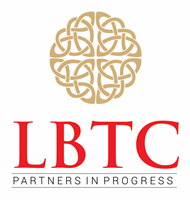Description
The course includes numerous practical examples, real-life illustrations, participative exercises, and case studies. It will be presented in a manner that suit individuals with varying levels of financial knowledge and experience.
Participants will gain both a theoretical and a practical knowledge of all the topics covered. The emphasis will be on the practical application of the concepts and as a result, delegates will return to their respective workplaces with the ability and confidence to apply the techniques learned.
What you will learn
The Challenge of Financial Economic Decision-Making
- The Practice of Financial / Economic Analysis
- The Value-creating Company
- Corporate Value and Shareholder Value
- A Dynamic Perspective of Business
- The Agency Problem and Corporate Governance
- What information and data to use?
- The Nature of Financial Statements
- The Context of Financial Analysis and Decision-making
Assessment of Business Performance
- Ratio Analysis and Business Performance
- Management’s Point of View
- Owners’ Point of View
- Lenders’ Point of View
- Ratios as a System – Pyramids of Ratios
- Integration of Financial Performance Analysis
- Economic Value Added (EVA)
- Predicting Financial Distress and Z-score Model
Analysis of Investment Decisions
- Applying Time-adjusted Measures
- Net Present Value (NPV) and Internal Rate of Return (IRR)
- Modified Internal Rate of Return (MIRR)
- Strategic Perspective
- EVA and NPV
- Refinements of Investment Analysis
- Equivalent Annual Cost (EAC)
- Sensitivity Analysis, Scenario Analysis, Simulation, and NPV Break-even
- Dealing with Risk and Changing Circumstances
Projection of Financial Requirements
- Interrelationship of Financial Projections
- Operating Budgets
- Standard Costing and Variance Analysis
- Cash Forecasts and Cash Budgets
- Sensitivity Analysis
- Dynamics and Growth of the Business System
- Operating Leverage
- Financial Growth Plans
- Financial Modelling
Valuation and Business Performance
- Managing for Shareholder Value
- Shareholder Value Creation in Perspective
- Evolution of Value-based Methodologies
- Creating Value in Restructuring and Combinations
- Financial Strategy in Acquisitions
- Business Valuation
- Business Restructuring and Re-organisations
- Management Buy Outs (MBOs) and Management Buy Ins (MBIs)
Strategic and Financial Planning
- Financial Accounting and Management Accounting
- The Links between Strategic Planning, Budget Setting, and Performance Measurement
- Planning and Strategic Management
- Mission, Vision, and Objectives
- The Planning Process
- External Environment Analysis, Internal Resources Analysis, SWOT and PESTEL
- Shareholder Wealth Maximisation, value Creation and Financial Strategy
- Financial Planning and Modelling, and Long-term and Short-term Financing
Cost-Analysis for Budgeting
- What is Costing?
- Cost Behaviour – fixed costs and variable costs
- Contribution, Cost / Volume / Profit (CVP) Analysis and break-even models
- Traceable Costs and Non-traceable
- Cost Allocation
- Product Costs and Period Costs – product costing for inventory valuation and profit ascertainment
- Direct costs, Indirect costs, Absorption Costing and Marginal costing
- Product Costing for Budget Setting, Budgetary Control and Performance Measurement
- Refinement of the Costing System and Activity-Based Costing (ABC)
The Framework for Budgeting
- What is a Budget – and Why Budget?
- The Budgeting Framework and the Various Types of Budgets: top down; bottom up; incremental; zero-based; activity-based
- The Budget Process
- Qualitative and Quantitative Techniques of Forecasting Sales and Costs, and Sales Pricing
- Budgeting for Labour Costs and Depreciation
- The Departmental Budget
- Preparation of the Master Budget and the Cash Forecast / Budget
- The Human Side and the Behavioural Aspects of Budgeting
Activity-Based Budgeting (ABB), Capital Budgeting, Budgetary Control and Variance Analysis
- How the Budget is controlled in your Organisation
- Activity-Based Budgeting (ABB)
- Budgeting for Capital Projects
- Discounted Cash Flow (DCF) investment appraisal methods of Net Present Value (NPV) and Internal Rate of Return
- Capital rationing and the Profitability Index (PI)
- Budgetary Control Systems and
- Responsibility Accounting
- Standard Costing for Budgeting and
- Budgetary Control
- Fixed Budgets, Flexed Budgets, Variance Analysis, and the reasons for variances
Beyond Budgeting – Broadening Performance Measurement Systems
- Integrating continuous improvement into the Budget Process
- Advantages and Disadvantages of Budgeting
- How to Improve the Budget Process in your organisation
- The Conflict between Performance Improvement and the Costing System
- Lean Thinking and Performance Improvement
- What next – beyond the Budget?
- The Balanced Scorecard – linking strategy with budgeting and with performance measurement
- Developing and Adapting the Balanced Scorecard: financial perspective; customer perspective; internal business process perspective; learning and growth perspective

